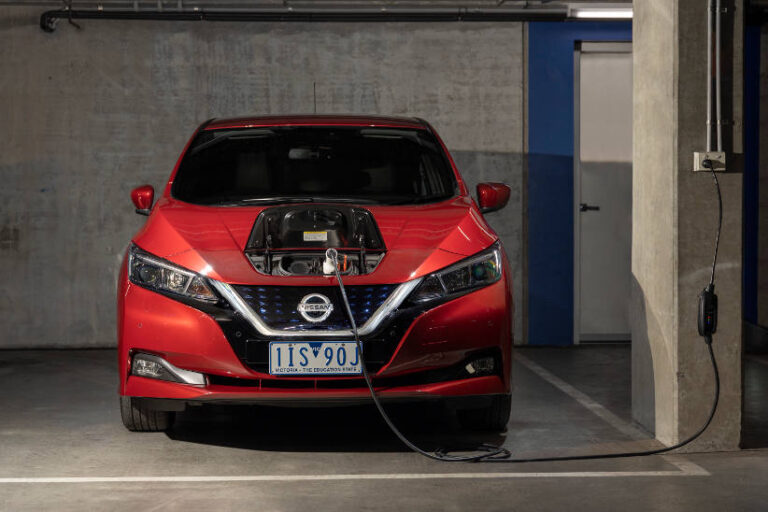Fleet Auto News spoke to Ben Warren, National Manager – Electrification & Mobility at Nissan Motor Corporation, early in June to find out about Nissan’s plans for electric fleet vehicles in Australia after they launched the Leaf e+ in April and heavily promoted its Vehicle-to-Grid (V2G) technology.
According to the group RACEfor2030, there is expected to be a rapid growth in electric vehicles over the next decade which will create a tremendous change in the way business and households access and use electricity. The opportunities for integrating the batteries in EVs into the electricity grid through flexible smart charging will change the way Fleet Managers and novated lease buyers select new vehicles.
The typical household battery which has become popular in recent years are still expensive with a 10kWh capacity battery costing up to $12,000. A 2021 Nissan Leaf sells for MSRP $49,990 and comes with a 40kWh battery. The Leaf e+ comes with a 62kWh battery for $60,490. A 2014 model Leaf comes with a 24kWh battery and sells for approximately $18,000.
So looking simply at the cost per kWh, if you could use your EV as the battery for your house and drive it everyday, the utilisation rate and Whole of Life Cost calculation looks very attractive.
And this is what blew our minds when talking to Warren. He talked us through several V2G projects in Australia and overseas including The Realising Electric Vehicle-to-Grid Services (REVS) project in Canberra which seeks to unlock the full economic and grid benefits of V2G in Australia.
Project funding is provided by ARENA with 51 Nissan LEAFs deployed across the ACT to test and provide V2G services. The vehicles will be part of the ACT Government fleet and when plugged in will provide Frequency Control Ancillary Services (FCAS) to the National Electricity Market (NEM).
ARENA CEO Darren Miller said this trial is an important first step in demonstrating how EVs can support the grid.
“ARENA is focused on commercialising technologies than can aid the integration of EVs into the electricity system. Given its potential capability to provide similar services as household batteries, V2G has the opportunity to transform a vehicle into a revenue generating device for consumers, through access to energy and network service markets and also to provide power solutions for the grid.
“As EV uptake grows, this project will help to unlock a future where EVs are just as critical a piece of the electricity sector as the transport sector.”
“The REVS project will also include a major study of the economic, electrical and behavioural learnings of V2G arising from the trial. Using these outcomes, international learnings and new analysis, the ANU will produce a V2G roadmap for Australia highlighting the potential of V2G and possible steps to get there.”
As we spoke to Warren, the complexity of this project became obvious as did the future opportunities for fleet and novated lease owners.
“People buy cars and park them for most of the day,” says Warren. “With V2G electric vehicles become useful for more than one task by charging in off-peak and providing excess electricity to power the home in peak periods.”
“V2G is relatively simple at a conceptual level, but it gets more complicated (and interesting) when putting into practice which makes projects like REVS so important to reach the next step which is commercialisation.”
One issue for Fleet Managers that FAN unpacked during the discussion with Warren was, who owns the electricity? If an employee takes a fully charged EV home, then uses it to power then house overnight, do they need to reimburse the company? Or will it attract FBT?
Stay tuned for some exciting years ahead in the fleet industry!







